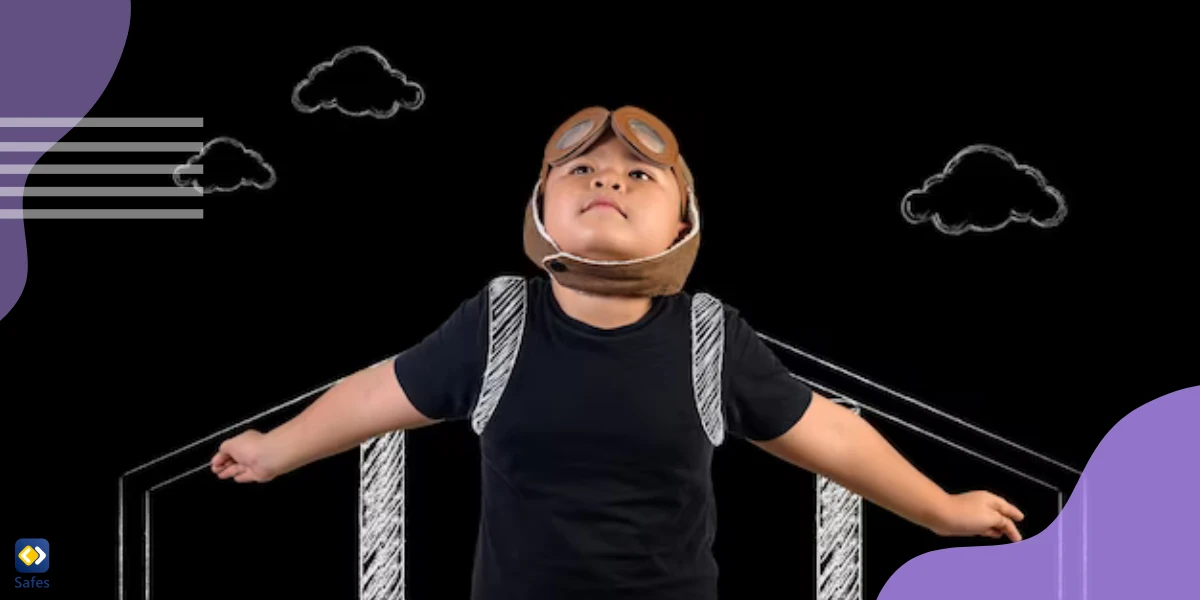Daydreaming is a form of mind wandering that distracts our mind from the task at hand. During daydreaming, most parts of the brain can sleep while we are awake. It’s a fact that we spend about half of our time every day thinking about imaginary things and fiction. Daydreaming isn’t always a positive action; In this blog you will learn how to stop maladaptive daydreaming.
Download and Start Your Free Trial of the Safes Parental Control App
This phenomenon is not uncommon in children, especially high school students when they are bored. It has both advantages and disadvantages for them. Of course, repeating this act can be destructive and have a negative impact on their spirit and performance. There are some ways to know how to stop maladaptive daydreams in children and they can be done by parents.
The benefits of daydreaming
Daydreaming has several advantages: It has a positive effect on children’s decision-making ability and promotes their creativity. Daydreaming allows them to use their talents and abilities in their activities and it is beneficial to them.
Daydreaming can promote problem-solving skills that help children and young people deal with their problems and look for a way to solve them individually. It allows them to find new ways and solutions and broaden their horizons to face their problems and try to generate new ideas.
Sometimes, a way for children to avoid anxiety and stress can be to imagine having their desires fulfilled. It also helps them regulate their emotions and calm themselves down. For example, if they’re upset about a bad grade they got in school, they can calm down by dreaming about something desirable. It’s a satisfying way to escape from sadness.
Children can encourage their introspection by reflecting on their dreams. It’s a way for them to observe their emotions and identify their values. This allows them to learn more about their personality and their manners.

The Potential Risks of Daydreaming
Despite its benefits, maladaptive daydreaming can have some downsides that can impact children’s behavior and lives. It can negatively affect their duties and responsibilities. In other words, it can occupy most parts of their brain and it’s kind of a distraction for them. If this continues, they may not be able to communicate with or even play with children of the same age.
For students, maladaptive daydreaming can negatively impact their academic performance. When they are bored, their minds can be hijacked, which can affect their ability to learn and be productive in the classroom. Studies show that higher rates of daydreaming in students can lead to poor performance in learning activities.
Maladaptive daydreaming can lead to isolation and social problems that make it difficult for children to make friends. It leads to an increase in shame and fear of interacting with others. It affects their future life , both socially and individually.
Understanding maladaptive daydreaming
Maladaptive daydreaming, or excessive daydreaming, is a mental problem in which a person spends much of their time drowning in their thoughts. In children, overdoing this act can be detrimental. Some of the symptoms of maladaptive daydreaming include trouble sleeping, concentration, a tendency to be alone, and low productivity.
There are some differences between normal and maladaptive daydreaming. Normal daydreaming is quite enjoyable and beneficial because it encourages creativity and imagination. It’s a way of planning future events and relaxing our minds. In children and adolescents, normal daydreaming can lead to good progress.
If you see that your child spends most of their time alone in their room and only indulges in thoughts, they should take a maladaptive daydream test as it can be a sign that they are addicted to daydreaming and it is better this psychic solve the problem with treatment.

Strategies for treating maladaptive daydreaming in children
As we mentioned earlier, daydreaming in children can be both beneficial and destructive. Parents should know how to stop inappropriate daydreams and use some strategies to get their children to focus. These tips might work for teachers too.
If it becomes an addictive act, it is highly recommended to see a psychologist.
- Encourage your child to interact more with their classmates and friends by involving them in activities and hobbies. For example physical games or exercise .
- Try to provide them with a suitable environment using natural light and fresh air.
- Appreciate them for their success by giving them gifts, even a small gift.
- Establish a useful routine by setting a schedule for it
For example, you can use a planner app .
How can parental controls help with maladaptive daydreams?
A highly recommended way to control your children’s situation is to use some kinds of software and apps that can help you monitor them better. You can use the default parental controls on your child’s device, e.g. B. _ Windows Parental Controls .
Setting some restrictions and limits on the use of devices and applications can also be done through the use of safes. Safes is a parental control app available for iOS and Android that allows you to:
- Limit screen time
- Set schedules for individual apps
- Instant blocking of all apps
conclusion
Overall, daydreaming is not an abnormal act in children and students, but it is important to know how to manage it and be informed on how to stop maladaptive daydreaming. You can use the tips above to learn how to stop maladaptive daydreaming. The number one tip for parents is to be supportive with daydreamers and create a balanced environment for them.
Your Child’s Online Safety Starts Here
Every parent today needs a solution to manage screen time and keep their child safe online.
Without the right tools, digital risks and excessive screen time can impact children's well-being. Safes helps parents set healthy boundaries, monitor activity, and protect kids from online dangers—all with an easy-to-use app.
Take control of your child’s digital world. Learn more about Safes or download the app to start your free trial today!




